HBG Design is on the forefront of the latest ideas in 2023 hospitality and entertainment design. Read our lead designers’ pick of the trends for the year ahead.
HBG ‘Design Thinking’ Contributors:
- Emily Marshall, IIDA, NCIDQ, Principal / Interior Design Director
- Alexandra Milkovich, IIDA, NCIDQ, Associate / Lead Interior Designer
- Landon Shockey, IIDA, NCIDQ, Lead Interior Designer
- Thor Harland. Lead Architectural Designer
Focusing Capital Budgets on Distinctive Amenities and Unexpected Experiences to Attract a Wider Market
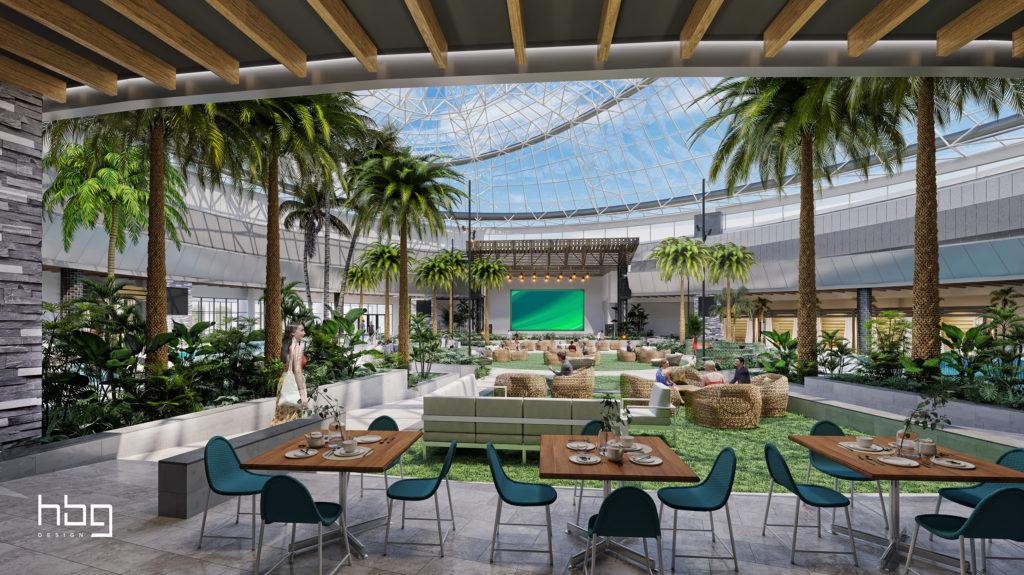
Competition in most markets will continue to be intense in 2023. Properties large and small across the U.S. are elevating competitive advantage by renovating and expanding new market-driven, revenue-generating amenities. Many of our resort clients are betting BIG on unique features to bring in a new untapped customer base from greater distances. “For Gun Lake Casino Resort in Wayland, Michigan, that ‘wow’ factor is a large multi-purpose pool and events complex. The new six-story, 32,000 SF architectural marvel is set to be an oasis for ‘superregional’ customers in Chicago and Detroit looking to escape those harsh Midwest winters,” says Thor Harland. “With a year-round temperature of 82 degrees, The complex is a never-before-seen expansive, mixed-use environment, completely climate-controlled under a stunning glass roof. At its heart are terraced, landscaped pools that transform into a one-of-a-kind event center within the atrium environment. A resort pool by day and a performance complex by night, the concept includes three distinct pools, a swim-up bar, live palm trees and tropical flora, and a large entertainment stage that can host events for up to 2,400 people.”
“We always work closely with our clients and their operations teams to keep project costs down,” says Emily Marshall, IIDA, NCIDQ. “By identifying and eliminating superfluous or unnecessary square footage, we help Owners focus their design budgets on those eye popping, revenue-generating amenities that create visual and experiential distinction in their markets.”
Multi-Functional Hotel Lobbies and Centralized F&B
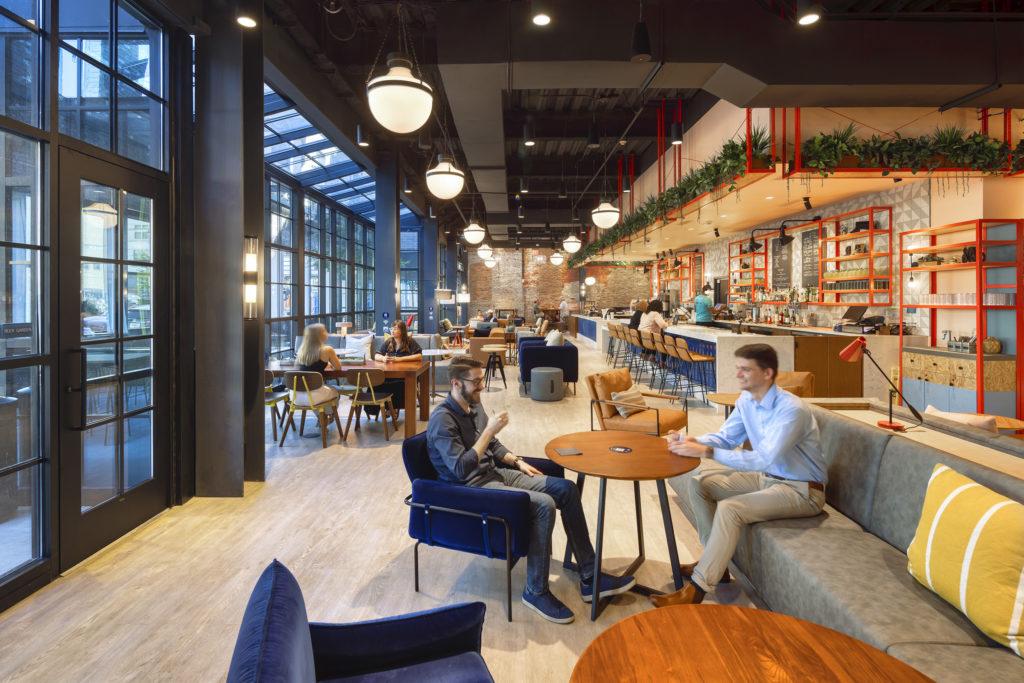
Gone are the days of guests zipping through the lobby as a passageway to other destinations. The new hotel lobby beckons you to sit and stay a while. “Furthering the residential trend that has taken off in the hospitality space, lobbies are appearing more like a comfortable living room – offering a place to eat, drink, work, and play,” says Marshall. The new lobby lounge coined ‘Talk Shop’ at Caption by Hyatt Beale Street Memphis reimagines the guest arrival experience with a lively multi-functional welcome area, all-day lounge and workspace, coffee shop, eatery, grab-and-go artisanal market and cocktail bar. “Energy reverberates throughout the colorful space, which was designed to encourage social interaction inside and outside at the adjoining beer garden courtyard,” she adds. Similarly, the adjacent Hyatt Centric Beale Street Hotel’s lobby offers a variety of amenities to suit visitors, locals and remote workers alike, including a large lobby bar and lounge, a communal worktable with integrated outlets and charging stations, a convenient grab and go market, and high-profile dining venue.
“We are also leading changes in F&B design that improves operational efficiency, as a direct outgrowth of the industry’s ongoing staffing shortages,” says Marshall. She explains that menus and food selections may be branded around an experience, but online ordering and room service / delivery / locational pickup means that food preparation no longer needs to be in separate kitchens attached to individual venues.
“Another good example is a property like Resorts World in Las Vegas where food and beverage operations are streamlined by creating centralized, shared hub and spoke type kitchens that service all dining venues on property.” There are many diverse solutions; it all comes down to creating efficiency and functionality that produces high quality with reduced resources.”
Dark, Dramatic, Statement-Making Design
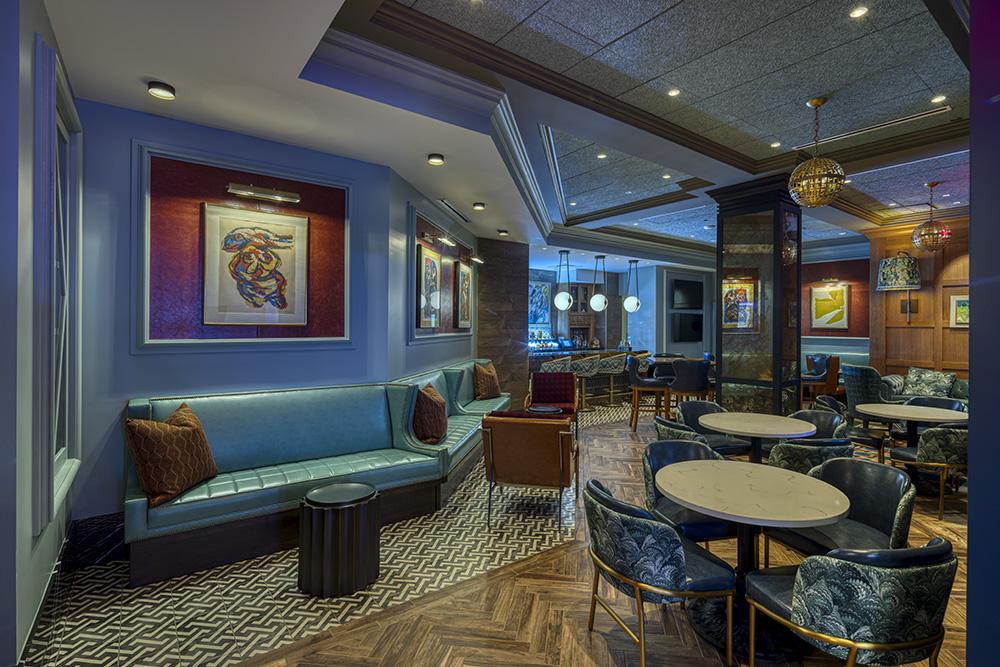
“We are taking bright colors like coral, violet or turquoise and deepening their tonality to create more subdued, rich, darker shades that are visually interesting and restorative,” says Landon Shockey, IIDA, NCIDQ.
The simplicity of white interiors and a minimalist palette is always in style, yet as casino resort designers we LOVE that deep, moody colors are back. One example: The Oak Room at Oaklawn Racing Casino Resort in Hot Springs, Arkansas–a perfect blending of contemporary and traditional design–features an early 1900s era aesthetic reminiscent of a dimly lit, moody speakeasy. The noted F&B venue mixes deep, luxe tones and geometric patterns with brilliantly colored, stunningly energetic LeRoy Neiman original paintings as a playful contrast in the eclectic eatery. Globe pendants, tufted leather banquettes, and custom oak detailing finish the look while transporting guests to a different era.
“Complementing inky hues, we’re blending rich textures like leather, velvet, natural stones, and a variety of woodwork that adds depth and softness which is irresistibly cozy and welcoming,” adds Alexandra Milkovich, IIDA, NCIDQ.
Continued Alignment of Sustainability and Design
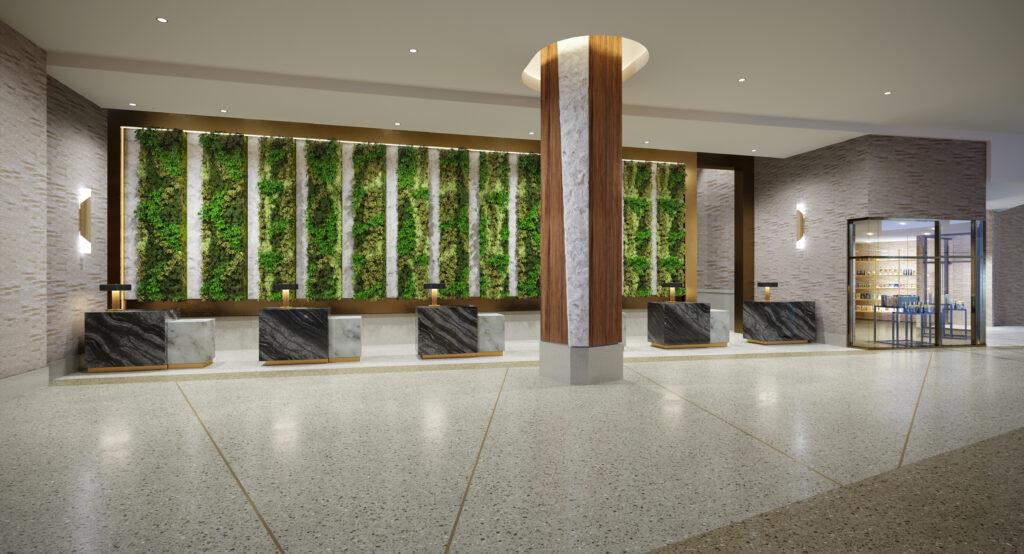
Sustainability is taking center stage these days and major hospitality brands like Hilton, Hyatt, Starwood and Marriott are committing to significantly reducing their environmental footprint in the coming years and focusing on wellness as a key benefit for guests.
“HBG Design is actively aligning our design concepts and interior selections to help clients down this path,” says Milkovich. “Our teams have prioritized sustainable materials in our interiors library and are training designers to select materials for their durability and ease of maintenance and to extend the duration between property refreshes/renovations.”
“Durability leads to a longer lifecycle, especially for furnishings; and the lifetime of a product is something that is extremely important to not only the environment, but also to our client’s bottom line,” adds Milkovich. “For instance, instead of using an exotic wood species such as Mahogany or Walnut that may be overharvested, we would specify Eucalyptus, which is a more renewable species and sustainably sourced. Today’s products made from Eucalyptus can often mimic the appearance of a rarer wood.”
Design That Supports Guest Wellness and Well-Being
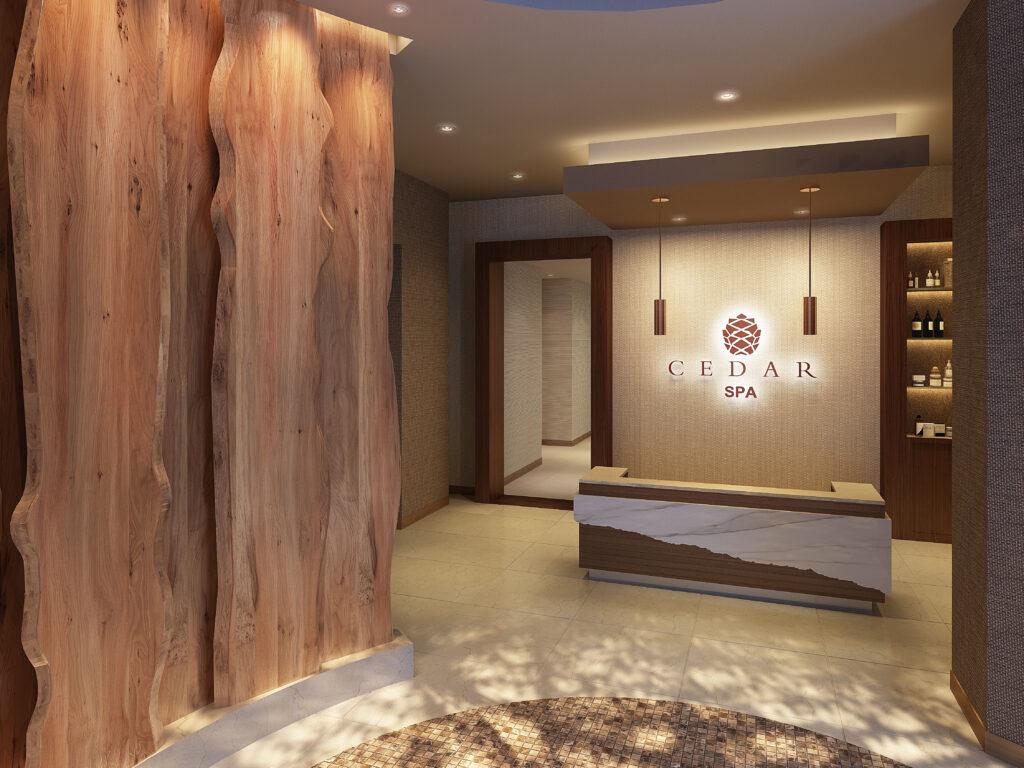
Many of our clients are excited to promote wellness, mindfulness and health benefits among their guests, making spas within the resort environment even more popular today.
“Reduction of stress and increased well-being and healing are some of the overall benefits of biophilic design through the infusion of natural and nature-inspired materials into the built environment,” says Marshall.
The new Cedar Spa at Four Winds Casino Resort in South Bend, Indiana, is a great example of how the demand for wellness is being incorporated into gaming resort properties. At Four Winds, the resort’s signature design elements of copper, cedar, birchwood and stone–each representing significant cultural elements of the Owner’s heritage–are integrated throughout the spa, holistically adding to the wellness experience. Located on the first level of the new 23-story, 317-room hotel tower, The Cedar Spa provides a variety of traditional and unique spa therapies, including steam rooms, saunas, vitality pools and separate lounges for women and men.
“The transition from the high energy zone of the gaming floor to the relaxation zone of the spa is highlighted by an illuminated feature that appears as sunlight shining through a canopy of cedar trees,” adds Marshall. “This simulation was created through ornate copper ceiling elements allowing pockets of light to peek through, creating dancing shadows around the spa entry.”
